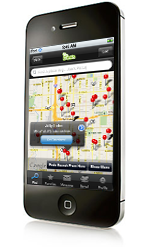10 Reasons Why Discount Programs are Worth Your Investment
Getting free stuff is great, but…
There’s always a little skepticism that comes with a “free” price tag. What’s wrong with it? Does the quality level match the price? How good can it really be if it’s free?
You get the idea – generally, the lower the price the less you expect from the product or service. So, maybe some things really are worth paying for?
The idea of a free price tag has even higher stakes when it comes to businesses. Free stuff can be risky for a business, especially if it’s going in front of customers. At risk is more than just a few dollars - the cost of reputation and customer perception can be enormous.
Our advice? Buyer beware. If it has your brand on it, then it’s worth an investment.
Are Discount Programs Worth an Investment?
The constant need for customer face time has led many brands to discount programs, which are growing in popularity as member benefits, incentives, employee perks, and/or customer rewards.
We know from experience - a well done discount program can have a powerful effect on brand engagement.
With free and cheap options available, the question has been offered up again - is this worth investing in?
The answer is pretty clear: with customer engagement (and loyalty) on the line, you’ll want a discount program that’s going to put your brand’s best foot forward.
Either way, it’s important to understand what you’re getting by making an investment, versus going the free route. Here’s a rundown of some key benefits associated with paid programs:
1. Focus on value (not skimming for revenue)
Because they’re not reliant upon affiliate commissions for revenue, paid discount programs can focus entirely on building usage. That means better offers, fine-tuned marketing, and an overall better representation of the client brand.
Conversely, free programs are often motivated to promote only the merchants who pay the highest commissions, regardless of member interest level.
2. The deals are mostly local (In other words, people will use them)
 In 30 years of building our discount network, one of the strongest lessons we’ve learned is the importance of local offers. 90% of all retail purchases are made at a brick and mortar store, and 80% of U.S. disposable income is spent within 20 miles of home. Usage patterns in our network reveal that to be much the same.
In 30 years of building our discount network, one of the strongest lessons we’ve learned is the importance of local offers. 90% of all retail purchases are made at a brick and mortar store, and 80% of U.S. disposable income is spent within 20 miles of home. Usage patterns in our network reveal that to be much the same.
Because most in-store offers are negotiated on a regional or single-location basis and offer no commissions, most free discount programs will simply pass them by. They require merchant relations professionals - a luxury paid programs can afford.
3. The deals are private
Some merchants are leery about their coupons being made available to the general public. In such cases, they’ll typically offer a better deal to segmented, private groups like those offered through paid discount programs.
Free programs rely almost entirely on public-facing offers. A public offer isn’t necessarily a bad offer, but seeing the same deal arrive in their mailbox isn’t going to advance the discount program brand at all with the customer.
4. Member data is safe, not sold
Because of the investment, paid discount programs don’t have to pull tricks with member data, such as selling it to retailers or leads providers. Consumers are apprehensive about having their personal information shared (62%), people who might gain access to personal information (59%), brands using/sharing personal information without consent (56%) and security measures taken by those verifying personal information to make sure it remains safe (51%). It’s important that brands keep a tight grip on what their customers have trusted them with.
5. Customer support is part of the package
Customer service plays a major role in shaping how people feel about brands, so it’s important to have someone on the line when a member has trouble signing up for a discount program, or any other issue.
If there’s no customer service staff to handle those issues, they’re going to find their way to your phone number. Luckily, the best programs will have staff dedicated to these problems.
6. Mobile coupons
 The advent of mobile coupons has spurred interest from groups that were previously lukewarm to couponing. 90% of mobile device users have at least one subscription to access coupons, promotions and special discounts.
The advent of mobile coupons has spurred interest from groups that were previously lukewarm to couponing. 90% of mobile device users have at least one subscription to access coupons, promotions and special discounts.
Mobile coupons are rapidly catching up to their printed counterparts. They’re important to the relevance of a program across all demographics.
Be sure your discount program provider has mobile coupons that can be redeemed in-store (an important distinction) as part of their package.
7. Direct merchant relationships
Relationships with merchants are important, because many of them will offer seasonal and spurt deals to their closest partners. These deals aren’t pushed to their affiliate networks because they’re not intended for public consumption - a unique advantage for private discount programs.
The importance of merchant relationships can’t be overstated. Programs that work closely with merchants see better offers and their members have easier redemption experiences.
8. No spam!
People just aren’t interested in being bombarded with marketing. Paid discount programs have the luxury of optimizing the timing and channels for their promotional messages. Since free programs need redemptions to pay their bills, their only concern is getting people to buy, even if it means bullying them with a barrage of emails.
9. Fewer hoops to jump through
People need to see value easily and quickly. Direct merchant relationships and exclusively negotiated offers typically have far less red tape on them, making usage much simpler and attractive to members.
10. There’s very little affiliate advertising
Affiliate offers have their place, as those are the only offers most big brands are willing to publish. Because they’re generally available to the public through sites like RetailMeNot, affiliate offers are primarily pushed to drive revenue back to the discount program. When the majority of a program consists to drive revenue, that’s not a discount program - it’s an advertising platform, built on the backs of members.
Getting What You Pay For (and Then Some)
Engagement is all about the relationship between a consumer and a brand. That means the brand needs to put its best foot forward and add something of value every time a customer encounters it.
That principle applies whether the “brand” in question is a bank, grocer, membership association, strip mall retailer, or even a workplace.
A high-usage discount program is one of the best engagement tools an organization can have in its belt. It’s a daily reminder of all the great things about the brand, with monetary benefits as a cherry on top.
The good news is discount programs really aren’t very expensive. The better news is they’ll pay for themselves in member savings very, very quickly.
That’s worth investing in.
Topics: Discount Programs, Member Benefits, free employee discount programs
Written by: Brandon Carter






.jpeg)







Share your Comment.